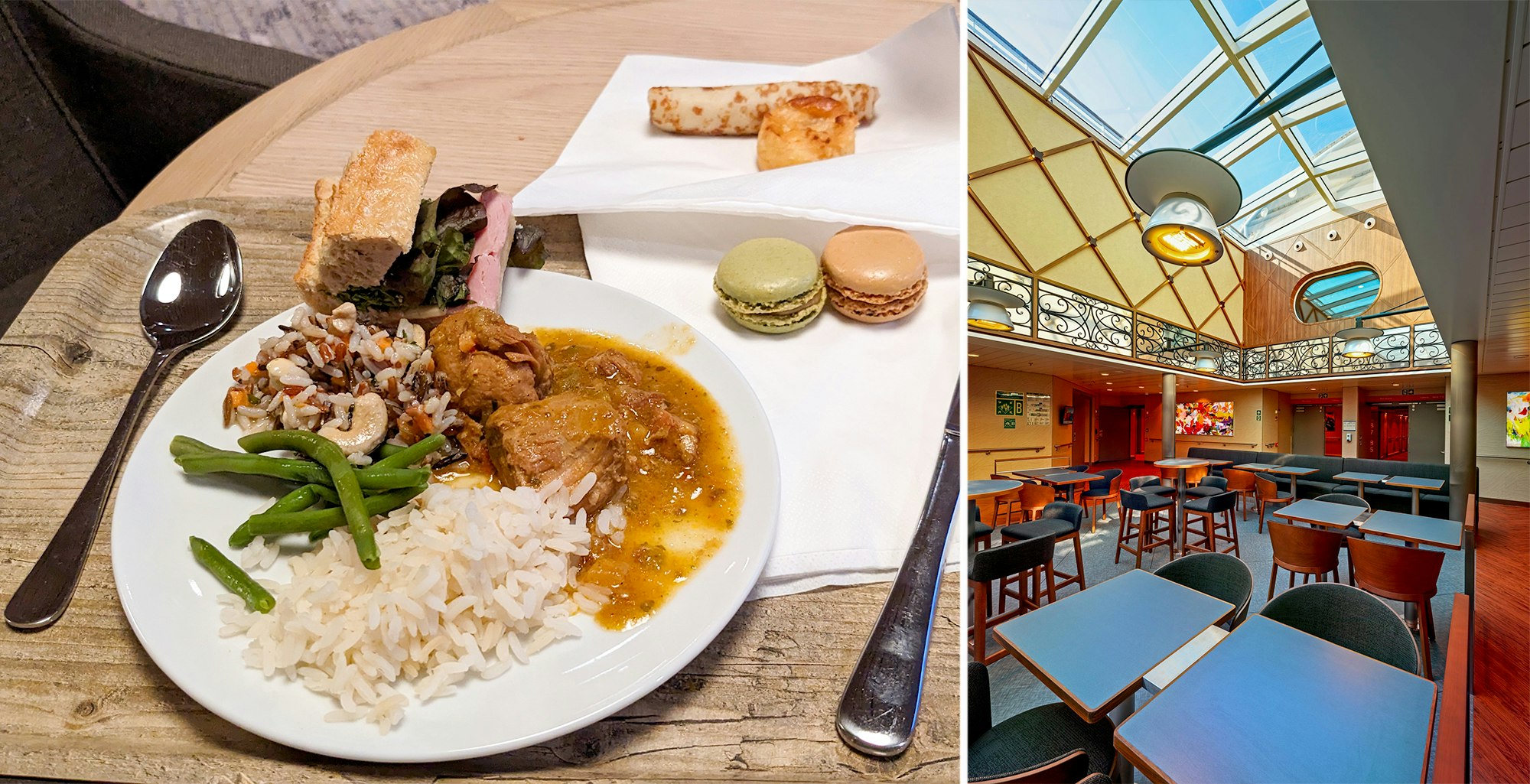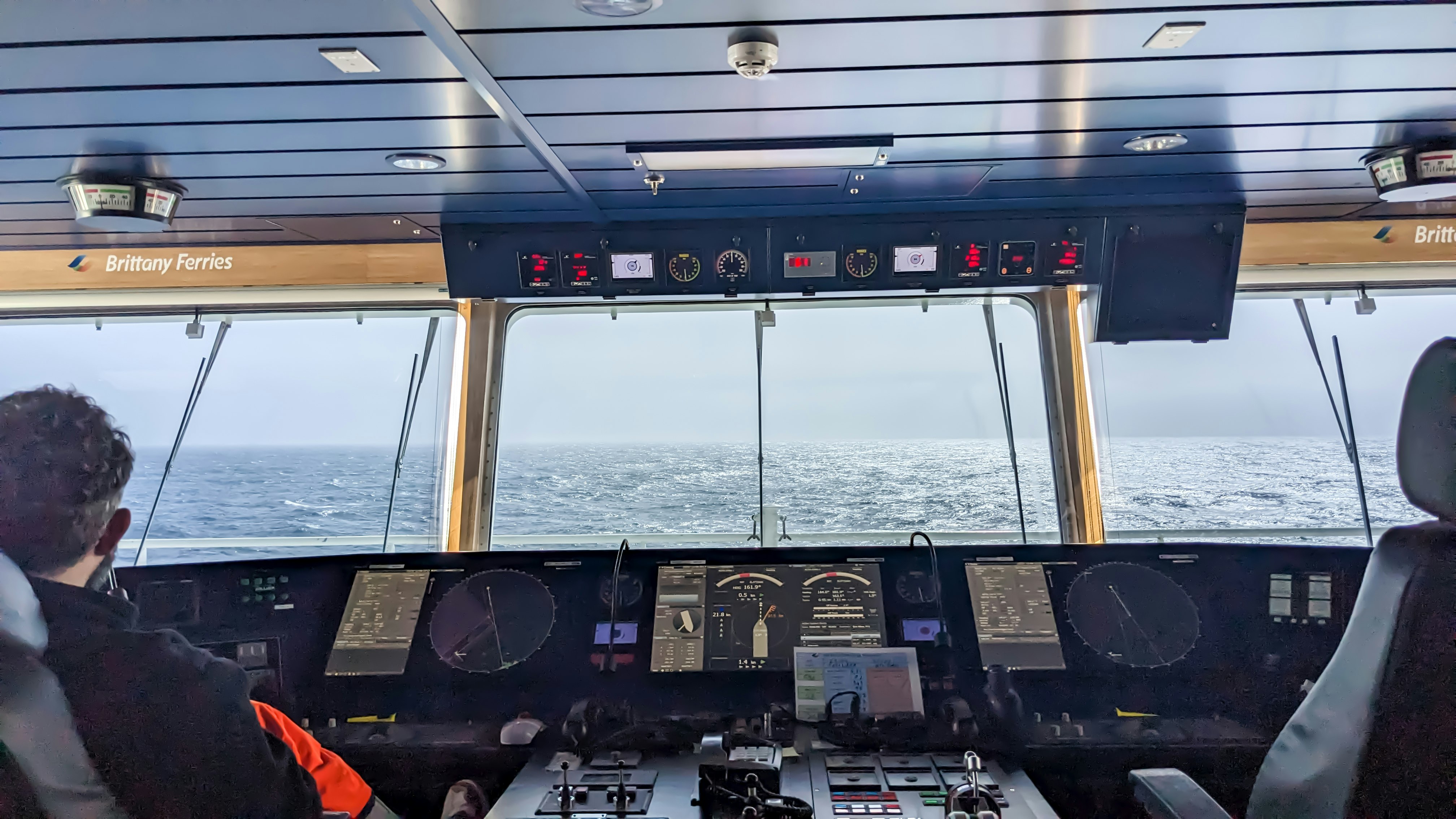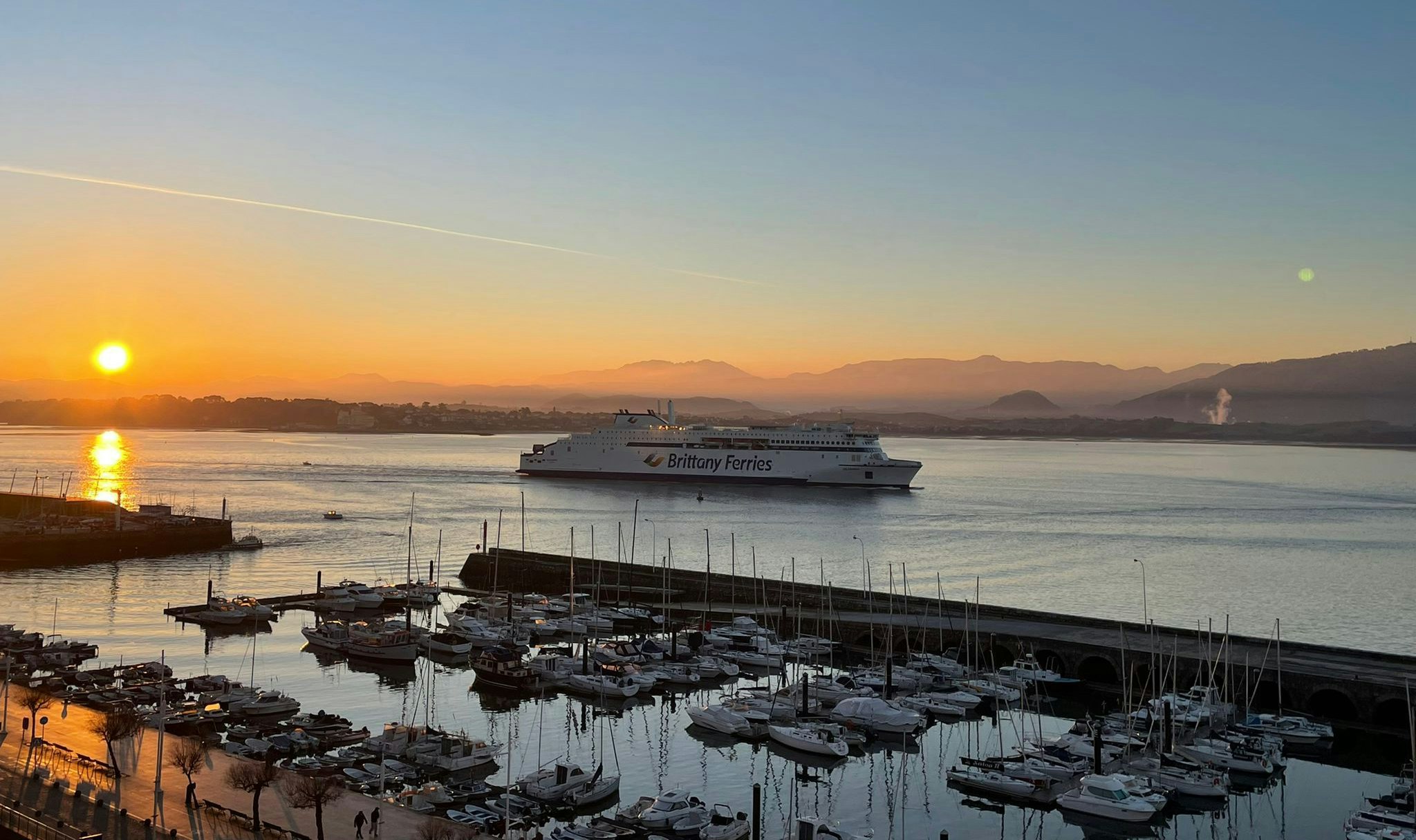Our slow travel series explores how you can take more mindful journeys by train, boat, bus, or bike – with tips on how to reach your no-fly destination and what to see and do along the way. We asked Lonely Planet editor Amy Lynch to share her experience taking the ferry from Ireland to Bilbao, Spain.
I feel the sea-salty wind in my face, hear the roar of waves behind me. As we work our way around the coast of Brittany, I wonder why I don’t travel like this more often.
Those of us who are increasingly drawn to the concept of slow – meaning no-fly – travel are eagerly welcoming the expanding number of ferry routes connecting Western Europe. What with near-constant airline delays, rising fuel costs and the constant drumbeat of climate disaster in the back of our minds, exploring the world is becoming fraught.
I live in Ireland, and since we lack a land link to Europe, options for eco-conscious travel are limited. But not impossible. Indeed, many ferry companies take passengers to Britain, France and Spain daily. The journeys are long, with the passage to Spain taking days.
But that’s all part of the charm.
Traveling by ferry not only sits a lot easier on the conscience – it’s an experience that’s tranquil, almost to the point of relief. The boat chugs along at a slow, steady pace. You can wander the decks at your leisure, and read in a comfortable armchair while the gray-blue sea and sky pass through the window. Enjoy a choice of restaurants – or just the sea air on another outdoor deck. The journey does take 32 hours, true – that’s 30 hours more than the flight. Yet if you have the time to spare, it’s a small price to pay.
The departure: dinner on board, before a midnight launch
I was on a recently launched route from Brittany Ferries, from Rosslare (County Wexford) in the southwest of Ireland to Bilbao in the north of Spain, aboard the Salamanca, the first LNG-powered ferry to operate between Ireland and mainland Europe. I started by taking the train from Dublin’s Connolly station in the city center to the ferry terminal at Rosslare Europort station. The train journey took a full three hours – yet I wanted to ensure that every stage of my trip was as eco-conscious as the sea-crossing. Start as you mean to go on.
A well-signposted five-minute walk took me from the train station to the terminal. Yet it occurred to me that there will need to be some more joined-up thinking if authorities want to encourage more eco-friendly itineraries: the last train to Rosslare got in at 8:42pm – which meant a more-than-three-hour wait before the midnight ferry departure.
There’s no pedestrian access to the ship; we few car-less passengers were driven into the hold by a minibus, then directed up to the decks via an elevator. Delightfully, there was none of the stress of an airport security check; my shoes and belt stayed firmly on.

I had a two-berth Commodore Club cabin on the outer edge of deck 9, which meant – yes! – a porthole. It was pleasant and clean – and, with a journey taking place over two nights and a day, undoubtedly the most comfortable option. The cabin was easy to find and relatively big (think budget hotel room), with an en-suite bathroom, video on demand, and tea and coffee with a kettle. Passengers can also reserve reclining seats for the journey.
I had plenty of time to wander the decks and grab some food and a glass of wine before we launched 90 minutes after midnight. This proved to be the smart choice: if you’re prone to seasickness, use the time before launch to eat and drink. Once the engines rev up and you start moving onto open water, the shaking of the ferry is noticeable and takes some time to adapt to.

The journey: a cabin with a view, plus multiple dining options
At the end of March, the journey was quiet – even serene, thanks to the spacious boat and low passenger count. The lounges are gently lit, with splashes of color in the design. Abundant screens provide info and entertainment.
With my cabin, I got a little green bracelet that granted me access to the C-Club Lounge, a section at the ship’s bow (its front, as I learned) with a beautiful view of the sea in front of us, and a buffet that is refreshed for different meals during the day (think curries, salads, soup, sandwiches, meats, cheeses, cakes and fruit). There were drinks both hot and cold, with alcohol and without. There was even red wine on tap – a favorite among most customers.

I had the choice of a couple of other restaurants on the ship, including, keeping with the theme of the route, the Spanish Taberna de Tapas. There’s also the larger Restaurant Azul, and the Plaza Mayor bar and cafe, inspired by the famous square of the same name in the old city of Salamanca. These spaces had a convivial feel, with passengers chatting and making friends as they had a beer at the bar or some tapas in the restaurant.
On board, you can also take advantage of duty-free shopping, an interactive information area for research before you land at your destination and an outdoor sundeck with seating and exercise machines. Families will be glad for the three different children’s play areas on board.
These amenities become extremely important once you learn the price of the onboard wi-fi. The first 90 minutes are free; after that, you can pay from €3.50 for one hour up to €20 for six hours. So it’s best not to count on logging on too much during the trip. Still, not having the option to offers the chance for relaxation. Bring a book, and enjoy the break from screens.

Key moments: a visit to the bridge, and Spain-inspired artworks
One of my favorite features of the journey was the Salamanca-inspired art that you could find dispersed around the passenger decks. The ferry has been fitted with over 200 individual artworks inspired by the Unesco World Heritage site of Salamanca and the Castilla y León region. A personal favorite was the artwork inspired by Velázquez’s famous Las Meninas: a “Menina” statue by Spanish artist Felipao, created in a 3D polyhedral format, that greets you in the C-Club Lounge (the biggest of several Meninas on display). Another favorite piece: a large street art mural by Rubén Sánchez, deck 10 (an outdoor sundeck for passengers). I spotted it when I went out during the night for some stargazing.

The arrival: onward to Bilbao’s center
The ferry arrived in Bilbao bang on time, 8am on Sunday. My fellow foot passengers and I had to wait for all the cars and caravans to disembark before a staff member drove us to the terminal.
It’s a good idea to have a plan for how to continue on your journey at this point, whether that’s organizing a taxi to the center of Bilbao (about 20 minutes), or a 5km walk or drive to the Santurtzi train station, which also goes into Bilbao.
It would be great to see more public-transport links and ferry-terminal facilities added on both ends to encourage non-drivers to use the ferry. Ferry ports and terminals have yet to be designed with foot passengers as a priority.

The cost
For on-foot passengers without a car it’s about €235 one-way. The cost increases significantly if you book a cabin. It’s €214 per cabin for a four-berth cabin with a window and €186 for one without a window. You could, however, keep costs down by just reserving a seat for sleeping at an additional €15.
If I could do it all again…
The one concession I will make for my next journey by ferry is to bring some seasickness tablets. Rough weather can mean a rolling, swaying deck, and I was incapacitated for some of the trip by queasiness. (This should be less of a concern for anyone traveling in the summer months.)
Spacious, calm and with the ever-present soothing sound of the sea, this ferry journey is, in this traveler’s opinion, far superior to air travel.
Amy traveled to Spain with the support of Brittany Ferries. Lonely Planet does not accept freebies in exchange for positive coverage.
